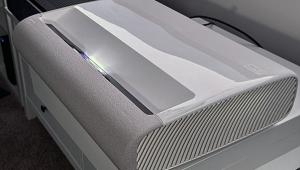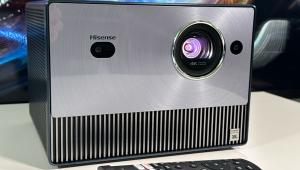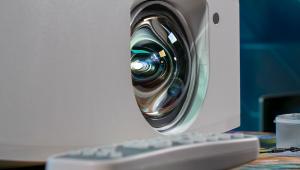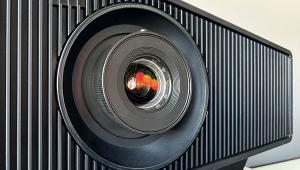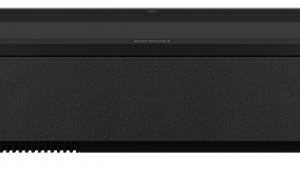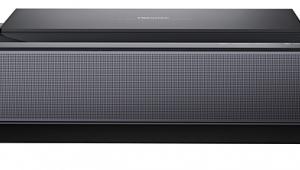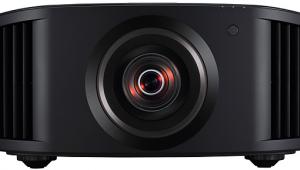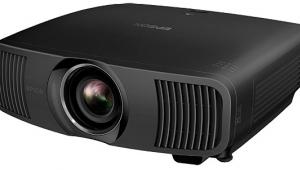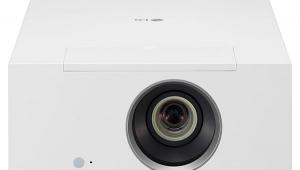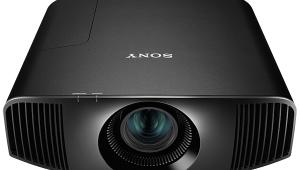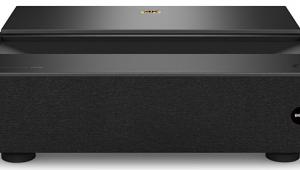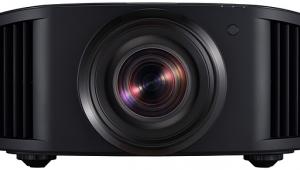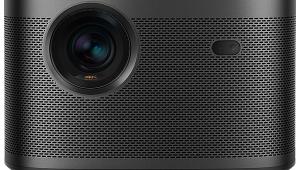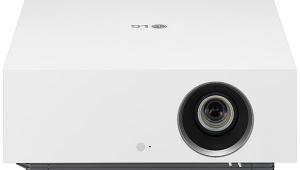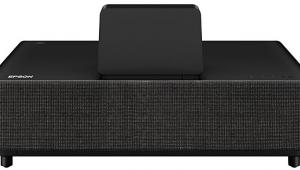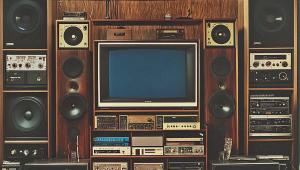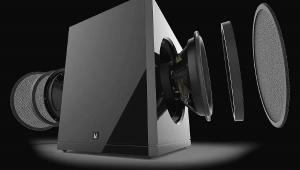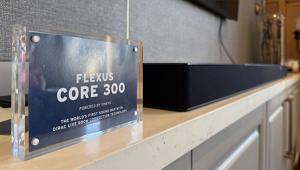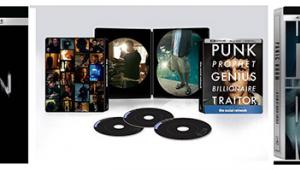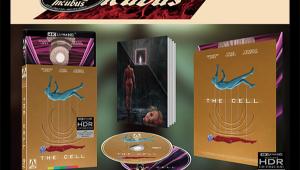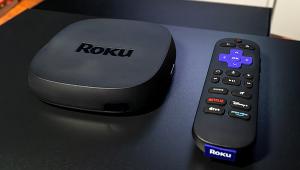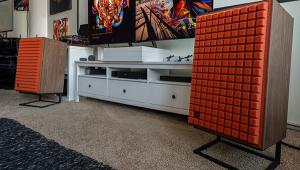SIM2 SVD 800 HD CRT Front Projector Page 2
 Before you can see the picture, however, you have to connect your sources. For starters, the projector comes equipped with two composite and two S-video inputs for NTSC devices. These inputs don't process the signal and only display an interlaced image. For these reasons (and more we'll get to in a moment), we don't recommend using these inputs at all. You should route NTSC devices through an external processor and into the five-wire BNC input that accepts either wideband component or RGB signals. This input handles HDTV or progressive-scan DVD images, as well. An additional VGA input is provided and can also be used with RGB sources, especially those from your PC.
Before you can see the picture, however, you have to connect your sources. For starters, the projector comes equipped with two composite and two S-video inputs for NTSC devices. These inputs don't process the signal and only display an interlaced image. For these reasons (and more we'll get to in a moment), we don't recommend using these inputs at all. You should route NTSC devices through an external processor and into the five-wire BNC input that accepts either wideband component or RGB signals. This input handles HDTV or progressive-scan DVD images, as well. An additional VGA input is provided and can also be used with RGB sources, especially those from your PC. We initially chose to route video signals through the SLD iScan Plus doubler, although we also tried a few other options. A projector's image doesn't depend solely on the installation technician; it also depends on the video processor. In this case, the iScan complements the Sèleco projector quite well. The resulting picture on both Lost in Space and Armageddon was sharply detailed and vibrantly colored. The projector has more than enough resolution to handle either line-doubled anamorphic images or HDTV. Rough estimates suggest that the SVD 800 is capable of about 575 vertical lines in the anamorphic mode. A full-screen 4:3 picture should handle a 1,024-by-768 image. With this much detail, New Line's anamorphic Lost in Space DVD came across sharply and clearly. HDTV images are equally as sharp. The only drawback to such excellent capabilities is that nonanamorphic widescreen DVDs like Armageddon show the line structure slightly. This can be remedied, though, with a higher-resolution video processor, such as the Faroudja DVP-2200. Interlaced NTSC images, with roughly half the resolution of line-doubled signals, exhibit extremely noticeable line structure. Considering this and the price of the iScan, I don't see why anyone would watch an interlaced picture. Again, this is a limitation of the source or external processor and is really a testament to the projector's resolution capability.
Resolution is not the SVD 800's only strong suit, however. It utilizes both color-filtered and color-corrected lenses that give the image excellent color fidelity. Many projectors in this price category don't offer the same advantage; manufacturers argue that the additional filtering comes at the expense of light output. Apparently, the Sèleco projector has plenty of light to lose because the image on our 6-foot-wide screen looked plenty bright. In addition, the vibrant and colorful picture accurately reproduces the source material. This can be seen in movies like Armageddon, in which the astronauts' orange flight suits come across with the appropriate shade of orange, as opposed to being more reddish or yellow. Greens are also accurately rendered. The result is a picture that, even without a higher-end projector as a reference, just looks right.
We've seen a number of budget front projectors with either excellent color fidelity or high resolution. We haven't seen many products that have both. Sèleco's SVD 800 HD offers exactly that. When combined with a good video processor, the Italian projector can give you high-end-projector performance at budget-projector prices and comes highly recommended.
Highlights
• Accepts wideband component, RGB, and VGA connections
• Great color fidelity and great resolution

HT Labs Measures: Sèleco SVD 800 HD Projector 
The chart above shows the gray scale (or color temperature) of the Sèleco projector and the color points of the projector's red, green, and blue tubes. We measured the gray scale as it came from the factory and found that we didn't need to make adjustments. The Sèleco's image stays relatively close to the industry-standard color temperature of D6500 Kelvin with both light and dark images. This performance was achieved with nearly 18 foot-lamberts of light output measured from a 100-IRE window pattern displayed on a 6-foot-wide Stewart StudioTek 130 screen with an anamorphic, line-doubled image. This is outstanding—better than any CRT front projector we've measured. The red, blue, and green color points are extremely accurate, measuring equal to (or exceeding) SMPTE specifications. The SVD 800 HD displays at least 576 lines vertically in a 16:9 frame and 768 lines with a full-size 4:3 image before line structure begins to overlap.—MW
- Log in or register to post comments

